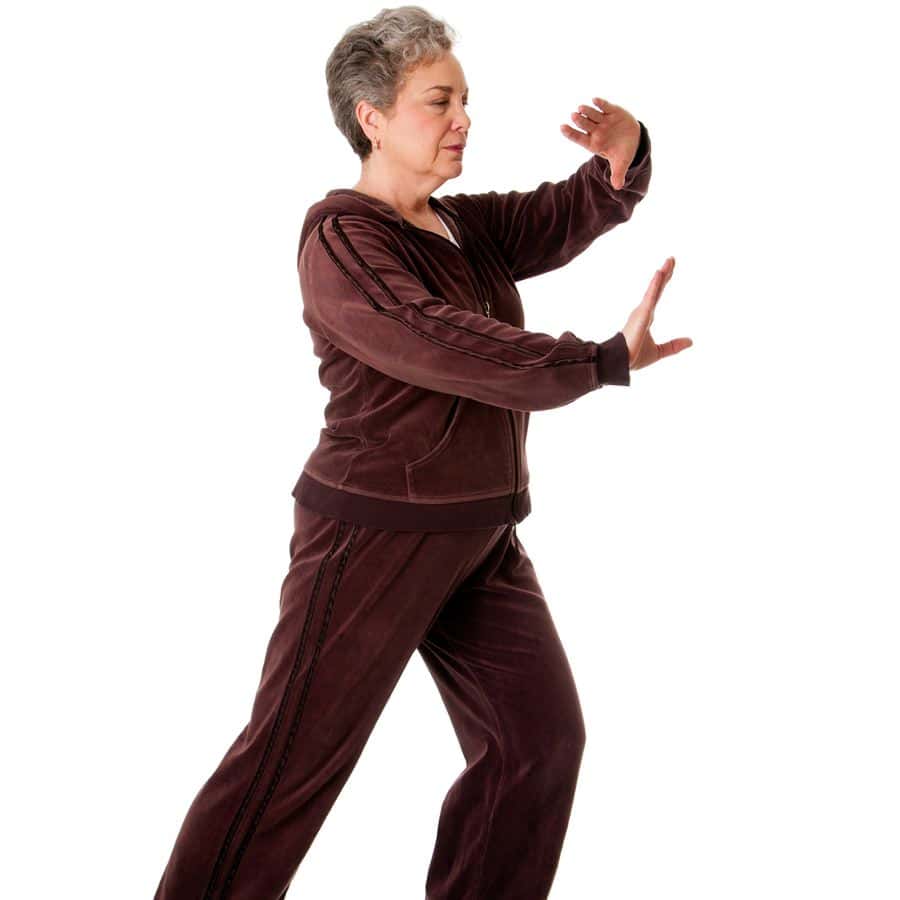
Up to 30 percent of women who have been diagnosed with breast cancer have trouble sleeping. They may be understandably worried about their condition and unable to sleep for that reason. Lying awake can also lead to anxiety about insomnia, which just aggravates the situation. Now clinicians at UCLA report on the results of a study of tai chi for these women. They found that the practice of the art form was as effective as cognitive behavioral therapy. Cognitive behavioral therapy (CBT) is considered a gold-standard treatment for insomnia.
Tai Chi as Treatment for Insomnia:
For the study, 90 breast cancer survivors with chronic insomnia were randomly assigned to cognitive behavioral therapy sessions or tai chi classes. Both groups met once a week for three months.
What Is Tai Chi?
Tai chi, sometimes written taiqi, is a Chinese martial art with slow moves and a meditative component. You might consider it moving meditation. The participants learned a Westernized version.
What the Scientists Discovered:
During the next year, the volunteers reported on their sleep and mood. At the end of the study, nearly half of the women in each group still were sleeping significantly better. They also had less fatigue and depression.
People may have less trouble finding a class in this martial art than a qualified cognitive behavioral therapist. That explains why the investigators are optimistic that this research offers hope for many women who have been treated for breast cancer.
Irwin et al, Journal of Clinical Oncology, May 10, 2017
Does This Ancient Practice Have Other Benefits?
Fibromyalgia:
A previous study showed that tai chi may be helpful for people with fibromyalgia (Wang et al, New England Journal of Medicine, Aug. 19, 2010). In this condition, patients often experience widespread muscle pain and severe fatigue as well as sleep difficulties and cognitive impairment.
Researchers in Boston compared the effects of tai chi classes twice weekly to those of stretching classes. Although tai chi is exercise, it is very slow and gentle and includes deep breathing and relaxation.
The study lasted 12 weeks. By the end of that time, the group that had been practicing tai chi scored significantly lower on a fibromyalgia scale than the control group. These patients maintained their improvement for an additional three months. Consequently, tai chi could benefit this hard-to-treat condition.
Congestive Heart Failure:
Patients who have been diagnosed with congestive heart failure have historically been told to take it nice and easy. That’s because their hearts do not pump blood efficiently. Cardiologists were concerned that exercise would overtax the weakened heart.
A study demonstrated, however, that tai chi can help people with heart failure feel better (Yeh et al, Archives of Internal Medicine, April 25, 2011). Patients were randomized to 12 weeks of group instruction in tai chi or to equal time in group education about heart failure, with 50 people in each group.
Those in the tai chi classes reported better mood and quality of life even though the objective measure of peak oxygen intake did not change. They also got more exercise each day, on average. These volunteers felt more self-assured about being able to accomplish their physical activities. The martial art training did not produce any detectable negative effects.
Why Does Tai Chi Practice Make People Feel Better?
We propose three explanations for the benefits these investigators have found. Many studies have found that physical activity improves sleep and feelings of well-being. Exercise that is intellectually and emotionally engaging without being too taxing clearly could provide multiple benefits.
Another reason is social interaction. All of these studies utilized group classes in which people learned the practice together. The participants probably provided each other with significant social support, which is critical for good physical and mental health.
The third reason is that learning tai chi requires mindful attention. Mindfulness has also been shown to increase benefit from non-pharmacological pain relief measures (Lee et al, Archives of Physical Medicine and Rehabilitation, May 12, 2017).

